For several vintages now, the discreet Grand Cru Classé of Saint-Émilion, located less than a hundred meters from Château Cheval Blanc, has decided to break free and embrace a bold, unconventional style. The estate’s extraordinary potential, finally revealed, is expressed through an original and distinctly contemporary blend. A look back at fifteen vintages to understand and appreciate the journey that has led Jean Faure from wine to perfume.
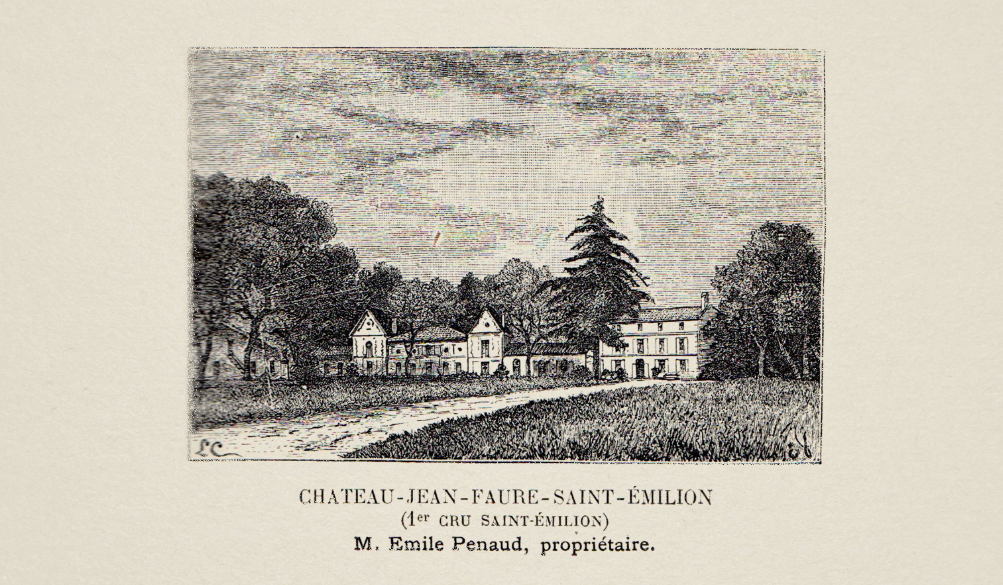
History
Château Jean Faure, located in Saint-Émilion, traces its origins back to the 16th century and takes its name from its first owner, Jehan Faure, a notable figure of the region. Over nearly six centuries, the estate has belonged to only six families, reflecting remarkable stability of ownership. As early as the 18th century, it was listed among the leading crus of Bordeaux and was recognized as a First Growth of Saint-Émilion in the 6th edition (1893) of the Féret guide: “… This cru produces an exquisite wine, highly perfumed and with excellent aging potential. It shares the character of both Saint-Émilion and Pomerol; it straddles both communes. Its vineyard covers 18 hectares, including 15 of very old vines (…) it occupies the highest point between Cheval-Blanc (…) and La Conseillante.”
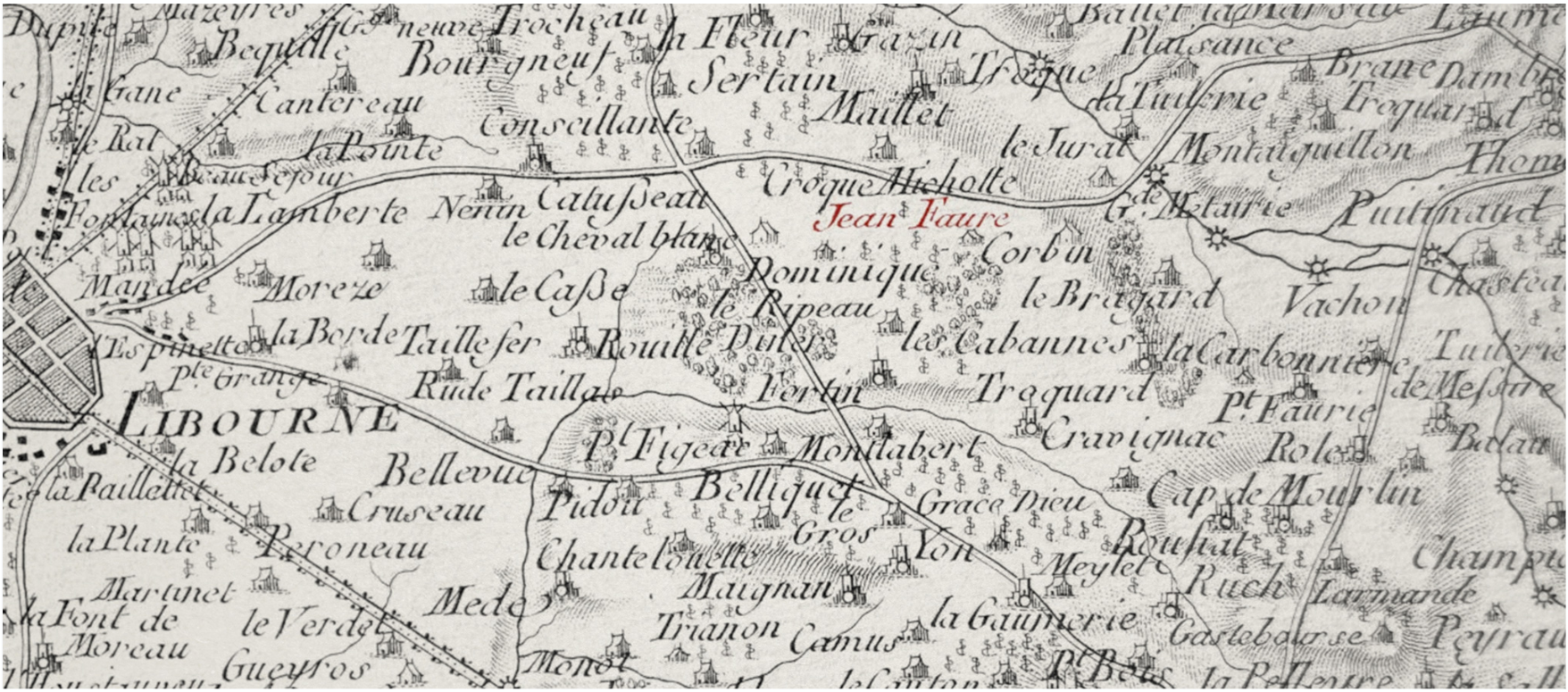
In the 19th century, the Penaud family shaped the estate as we know it today, followed by Marcel Loubat in 1921 and his daughter. After a period of difficulty in the 1970s, the estate was excluded from the Saint-Émilion classification in 1985. Renewal came in 2004 with the acquisition by Olivier Decelle, who modernized the facilities, converted the vineyard to organic farming (certified in 2017), and began the transition to biodynamics (the 2023 vintage is certified by Biodyvin). Thanks to these efforts, the Château regained its status as a Grand Cru Classé in 2012.
The terroir
The vineyard covers 18 contiguous hectares, less than 100 meters from Château Cheval Blanc and close to Château Figeac. The soils are composed of deep clays (from 40 cm), gravel, and ferruginous sand, providing an ideal terroir for Cabernet Franc, the dominant grape variety (65%), complemented by Merlot (30%) and Malbec (5%). This unique varietal composition in Saint-Émilion is very similar to that of neighboring estates Cheval Blanc and Figeac.
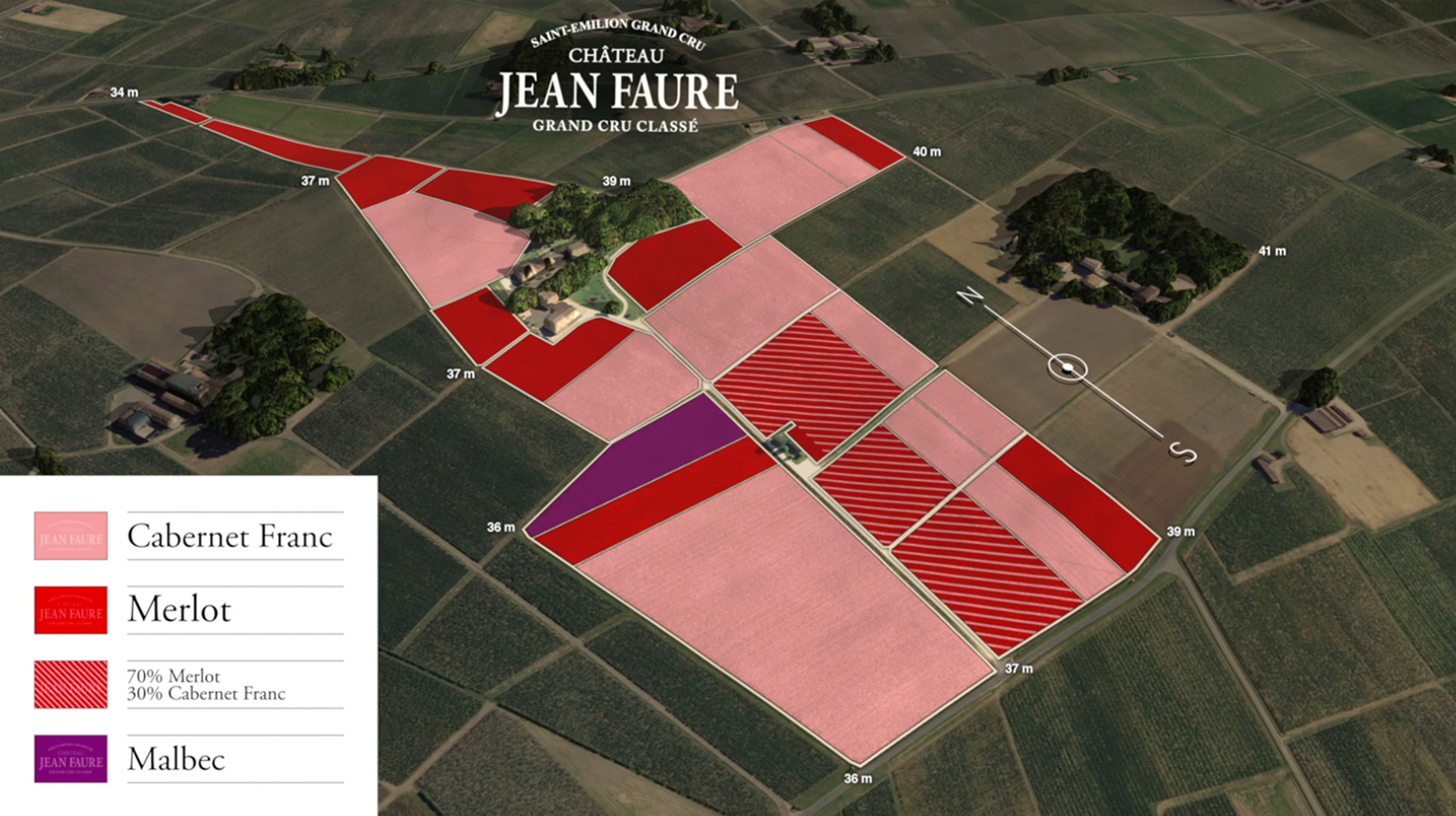
Xavier Choné, agricultural engineer and Doctor of Oenology, conducted a soil study of the estate. He summarizes its geology and topography as follows: “80% of the surface at Château Jean Faure has a very clayey subsoil appearing from 30 to 100 cm deep. Roots can descend as far as 150 to 200 cm. The compact structure of the clay subsoil helps limit vine vigor. Water rises by capillarity through the clay, allowing the vine to thrive until harvest. On 40-year-old vines like those at Château Jean Faure, water stress is impossible.”
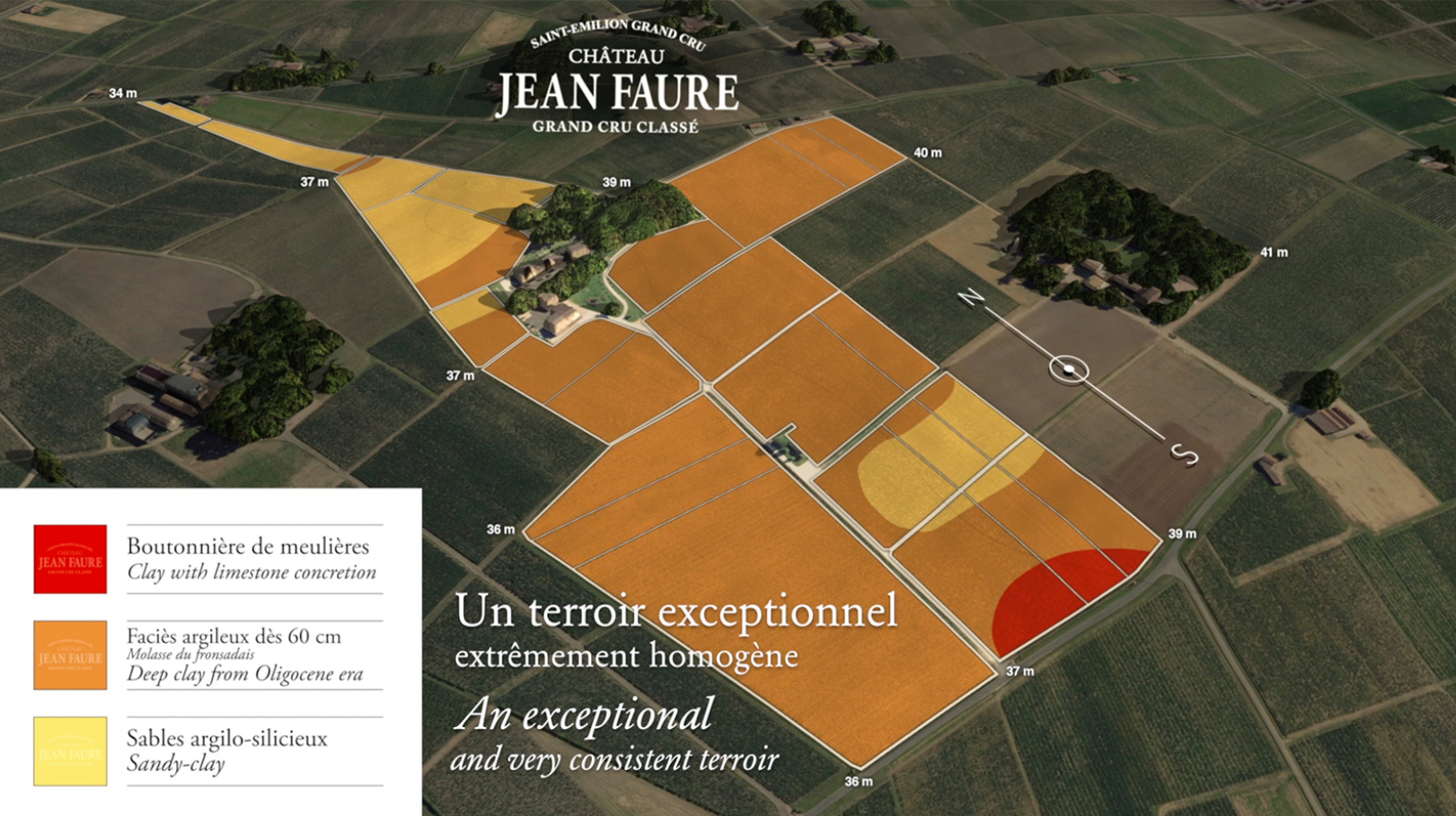
In 2020, a detailed intra-parcel mapping of the entire vineyard identified three distinct soil types:
• A clay soil from 60 cm deep (the vast majority of the estate);
• A clay-silica soil at 90 cm;
• A pocket of millstone.
Leading to the following conclusion: “80% of Jean Faure’s terroirs are great terroirs with clay subsoils, perfectly suited to Cabernet Franc.” Q.E.D.
The winemaking
Harvesting is done by hand, with meticulous sorting first in the vineyard, then on double sorting lines upon arrival. The grapes are handled gently and vinified without added sulfur or cultured yeasts, favoring long macerations. Each parcel is vinified separately to preserve the widest possible range of wines for blending.
After malolactic fermentation, the final blend is made. The wines are aged for 18 months, mainly in French oak barrels (about 35% new oak and 30% one-year-old barrels). Part of the wine is aged in concrete vats (20%) and in large oak casks (15%). Aging on fine lees helps preserve aromatic freshness and the wines’ aging potential.
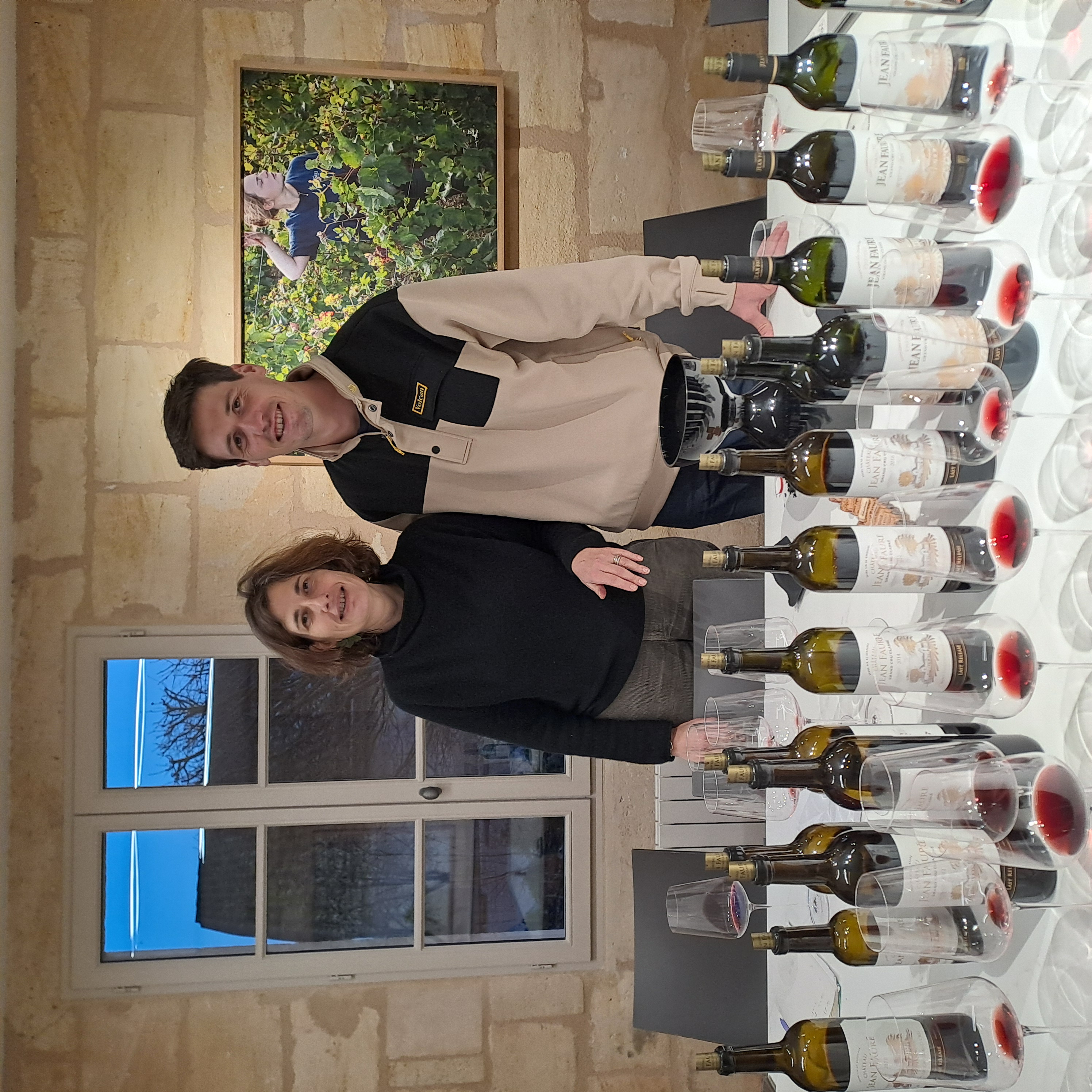
The verticale tasting
Between 2007 and 2024, Château Jean Faure experienced as many evolutions as it did moments of self-questioning. The arrival of Olivier Decelle in 2004, the guidance of consultant Stéphane Derenoncourt from 2007 to 2010 (?), then Hubert de Boüard from 2010 to 2017, and finally the arrival of Marie-Laure Latorre in November 2018, mark the modern history of Jean Faure as a quest for identity—against preconceived notions and the economic realities of a world-renowned appellation. The classification of grands crus classés, the influence of consultants (then at its peak), and the aesthetic trends of the time required the château to manage the present while preparing for the future: to be a great Saint-Émilion while becoming Jean Faure, to believe in Cabernet Franc without renouncing Merlot, and ultimately, to become Jean Faure while remaining a Saint-Émilion. Beyond history, this vertical tasting reminds us of the all-powerful influence of terroir over the certainties of the moment—at least if one accepts what is there. Jean Faure was a wine; it has become a perfume, marked by finesse and purity, slowly revealing its power. If Saint-Émilion resembles Jean Faure, then Jean Faure is truly a great Saint-Émilion! Enjoy your discovery.
The whole ertical tasting HERE
Château Jean Faure per vintage:
Château Jean Faure 2007
Château Jean Faure 2008
Château Jean Faure 2009
Château Jean Faure 2010
Château Jean Faure 2011
Château Jean Faure 2012
Château Jean Faure 2013
Château Jean Faure 2014
Château Jean Faure 2015
Château Jean Faure 2016
Château Jean Faure 2017
Château Jean Faure 2018
Château Jean Faure 2019
Château Jean Faure 2020
Château Jean Faure 2021
Château Jean Faure 2022
Château Jean Faure 2023
Château Jean Faure 2024
